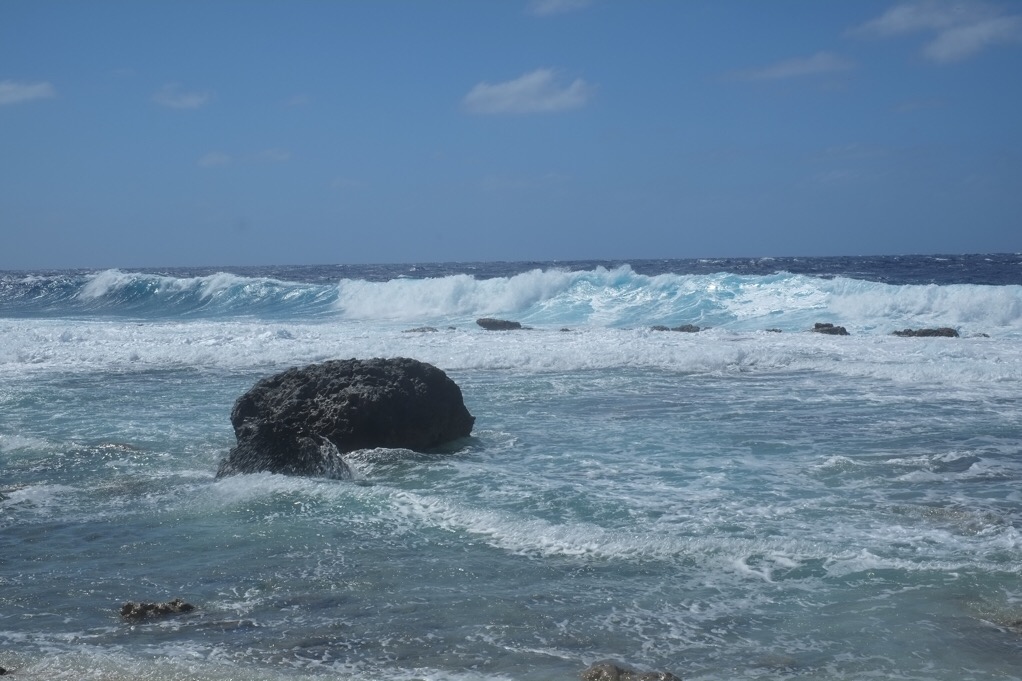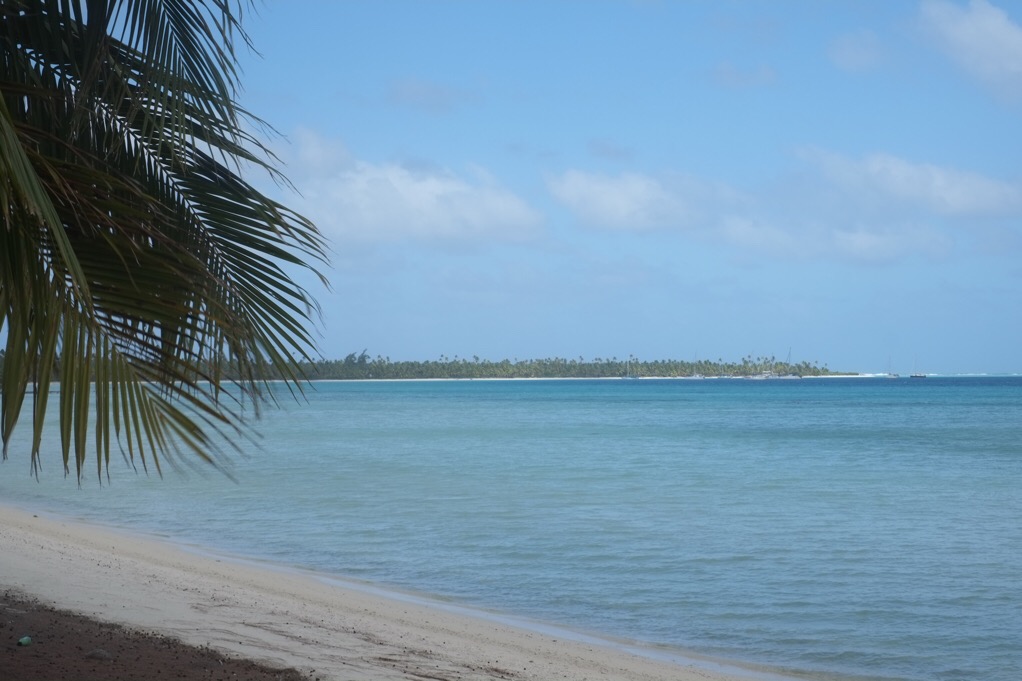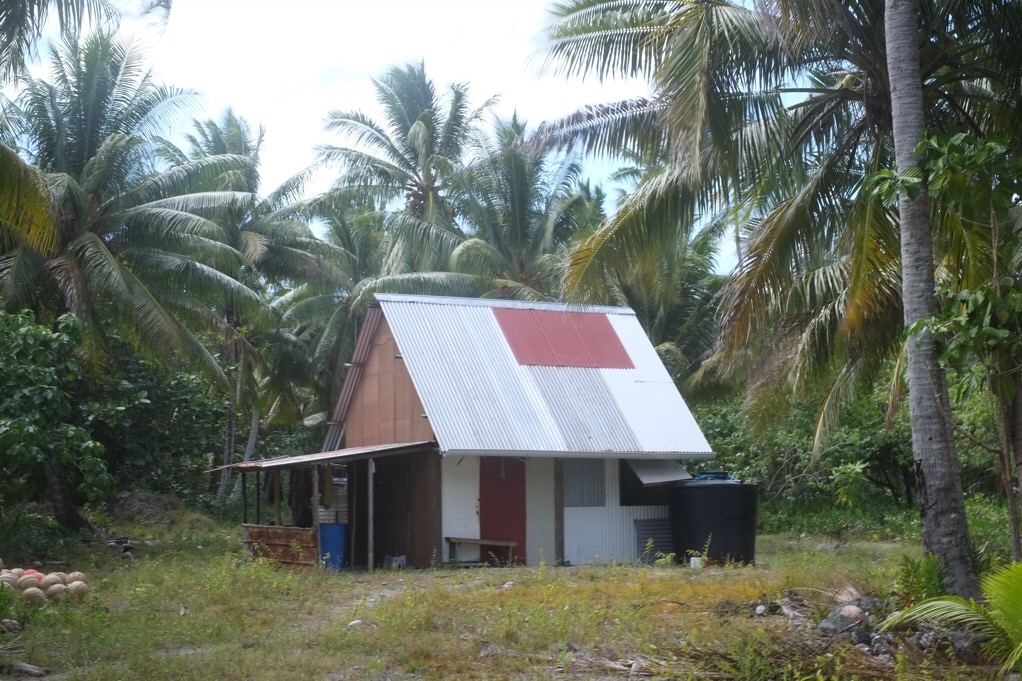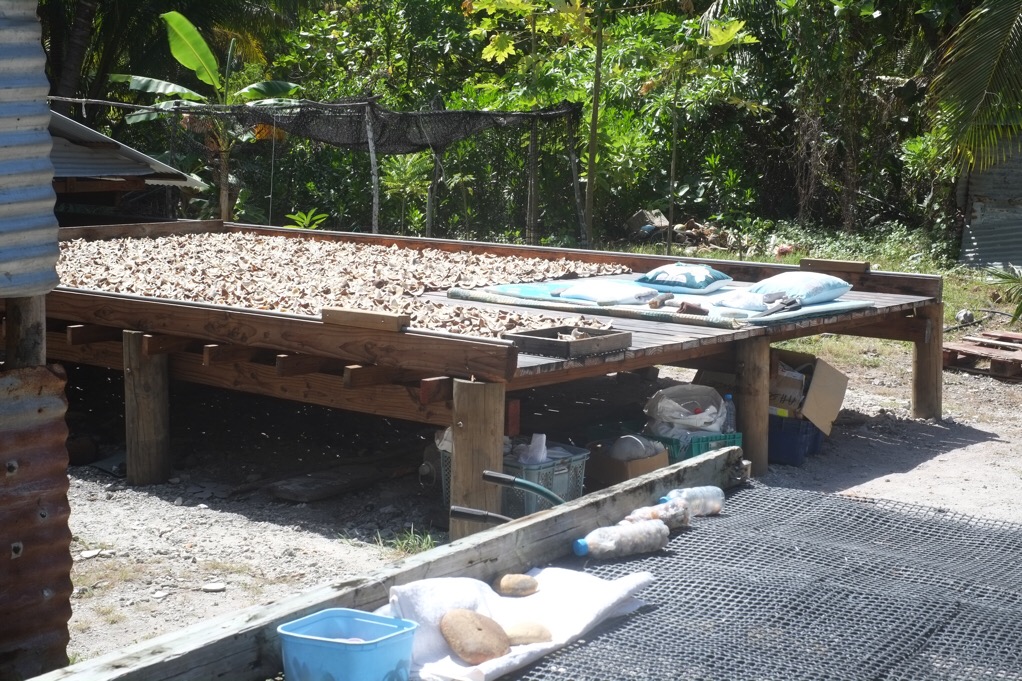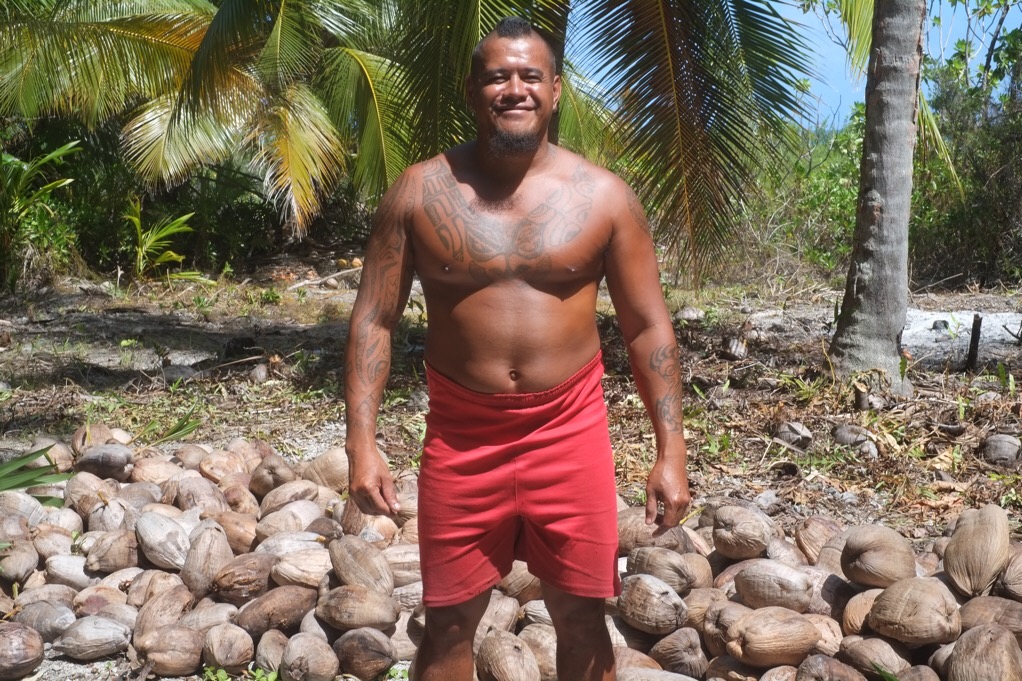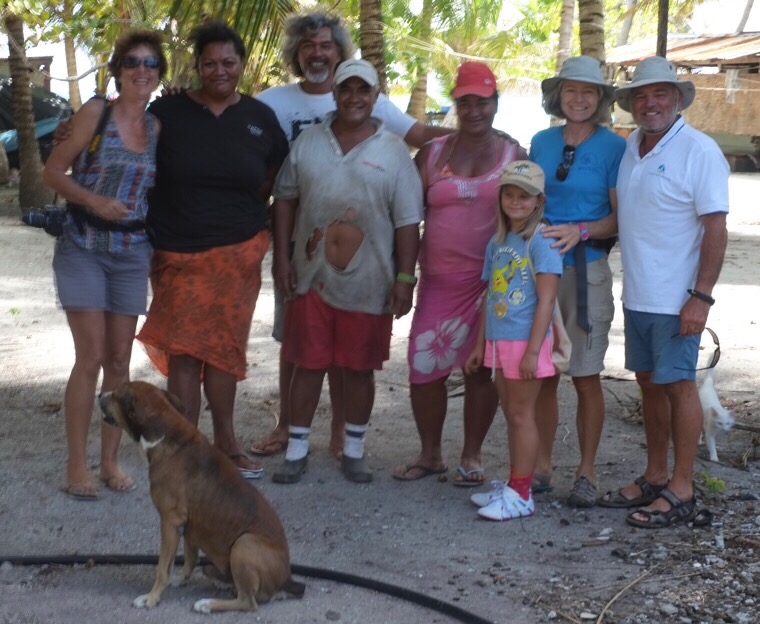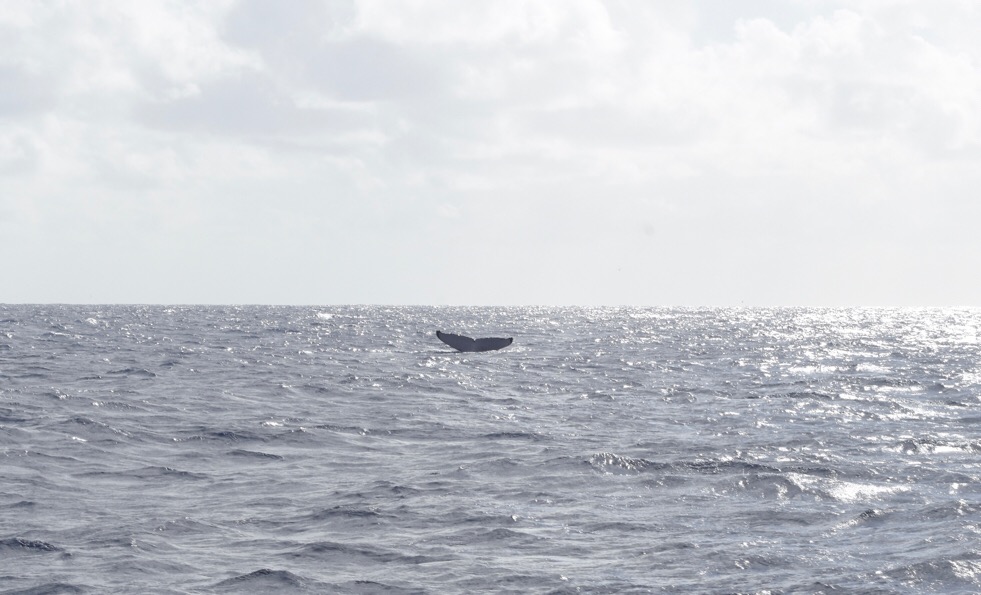Thar she blows!

Vega
Hugh and Annie
Tue 22 Aug 2017 20:47
16:49.40S 153:55.50W At last, we have seen a whale spout for the first time on this voyage! We were just leaving the pass through the reef from the lagoon at Maupihaa when there was what appeared to be a blast of steam a couple of hundred metres ahead and the clearly identifiable dorsal fins and tails of two humpback whales. The tale flukes were enormous and hopefully Annie will have a picture that I can attach............. The passes (channels) that connect the lagoons of the atolls with the open sea usually have a strong current flowing through them, either as a result of the tide flowing in or out or as a result of water flowing into the lagoon across the reef and raising the level of the water that then flows out through the pass. Marine life is attracted to the passes (presumably as food is concentrated there) and they can be the best locations for scuba diving - hence the sharks in Fakarava. It seems that whales are attracted to them also and my food theory is bolstered by the fact that fishing for tuna was particularly successful just outside the Maupihaa pass (not by us but we were able to eat the result of others' efforts). Maupihaa was an eight day stopover waiting for windy conditions to pass through. We had intended a stop at the previous island Maupiti which is considered to be very beautiful. However, as we approached, another yachtie radioed to say that there were two metre waves in the pass and it wasn't recommended for entry that day. So we continued overnight to Maupihaa to take a look at what is reputed to be one of the most difficult reef passes - very narrow with a current flowing out of between 4 and 9 knots. Nervously we approached for a look on a grey and windy morning and given that we motor at six knots with high revs were not enthralled at the prospect. Just at that moment another yachtie within the lagoon (Paul on Monkey Fist from Australia) radioed up to say that he had made it in the day before and it wasn't too challenging. We were one of three yachts checking out the entry and after the first two made it through we powered into the gap and could manage about two knots against the current. With the reef within yards on either side there was no room to turn if anything went wrong - my mind kept running through the engine service in Papeete. We made it through and dodged the bommies and pearl farm buoys across the lagoon to the far SE corner. Maupihaa is coffee table South Pacific with low coral islands, white sand, coconut palms, pale blue shallow lagoon to anchor in and a seawards facing reef with big surf pounding across. There are worse places to hang out and we spent our time cycling on the rough track that serves as the road, walking, swimming, paddle boarding, playing boules, gathering for a pot luck supper on the beach, BBQ's on Jadean, meeting the locals (all 17 of them, entirely reliant upon the production of copra through the island cooperative with one annual collection - the pearl farms have been disused since the last cyclone in 1998). Manta rays swam past in the afternoons and the reef sharks were joined by at least one Lemon shark. The Lemons are considered bad tempered and aggressive by the locals. This is where a catamaran comes into its own. The space on deck is vast so you can invite all your friends to help you eat the huge tuna you catch en route. The South Pacific offers some of the most beautiful anchorages imaginable and yet, surprisingly, some of the most uncomfortable sailing of the whole trip. The prevailing wind at this time of year is from the east or south east but when the big rain squalls come through the wind backs to the north east. As a result you get cross swells that cause violent rolling as the boat is pitched from one side to the other. Normal rolling with a one directional swell is a much more gentle affair. At the moment there are no squalls around and we are following 20kts of wind with a nice long swell towards Palmerston Island where all the inhabitants are descended from one William Marsters who settled there with his three local wives in 1862. Apparently it is an interesting and quirky experience to visit the island and each boat is adopted by a local family throughout the the visit. We arrive on Wednesday and hope that one of the eight moorings provided for the visiting yachties will be free. 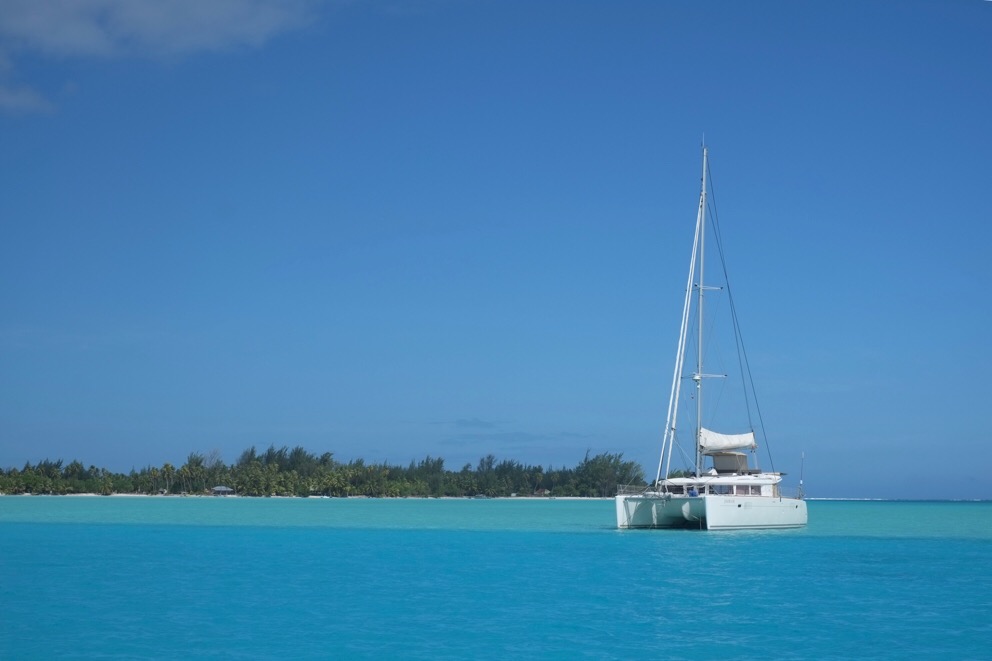 |
